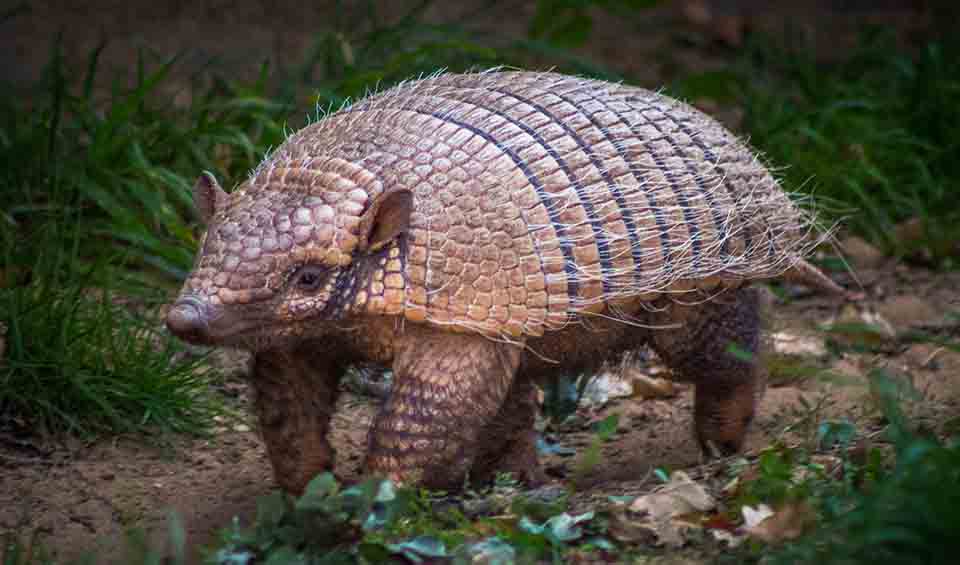One of the most notable features of the six-banded armadillo is its body armor, which consists of tough, keratin-based scales that cover its entire body. These scales, similar in composition to human fingernails and hair, provide essential protection against predators and environmental hazards. The scales are arranged in distinct bands, separated by grey-brown hairs, giving the armadillo its characteristic banded appearance. Interestingly, while they are commonly referred to as six-banded armadillos, individuals may possess anywhere from six to eight bands, varying in number and arrangement.
In addition to their armored exterior, six-banded armadillos have flattened heads covered with scales, which further protect their vulnerable facial features. These adaptations help shield the armadillos from potential threats and allow them to confidently navigate their environment.
Six-banded armadillos are known for their territorial behavior, marking their territories with scent glands located on their bodies. They will fiercely defend their territories from intruders, attacking other armadillos with biting and scratching if they encroach upon their space. Despite their territorial nature, six-banded armadillos are not solitary creatures and may form small family groups or colonies, particularly during the breeding season.
Unlike many other armadillo species, which are primarily nocturnal, six-banded armadillos are diurnal, meaning they are active during the day. This unique behavior allows them to forage for food and engage in social interactions with other armadillos and wildlife species during daylight hours.
Distribution
 Argentina
Argentina Bolivia
Bolivia Brazil
Brazil Paraguay
Paraguay Suriname
Suriname Uruguay
UruguayAnything we've missed?
Help us improve this page by suggesting edits. Glory never dies!
Suggest an editGet to know me
Terrestrial / Aquatic
Altricial / Precocial
Polygamous / Monogamous
Dimorphic (size) / Monomorphic
Active: Diurnal / Nocturnal
Social behavior: Solitary / Pack / Herd
Diet: Carnivore / Herbivore / Omnivore / Piscivorous / Insectivore
Migratory: Yes / No
Domesticated: Yes / No
Dangerous: Yes / No




